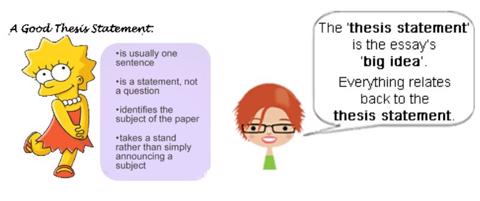It is often intimidating for students when they are given term paper or research paper tasks in their courses. No matter the subject, writing perfect papers that score high grades is a skill that we seek to help you achieve. This article is the ultimate step-by-step guide on how to successfully write a good research paper that rocks your teacher and earns you a grade A and respect from your peers.

Easy navigation table
What is a research paper?
A research paper is a piece of academic writing that presents an author’s thesis and arguments based on the original research concerning a specific topic. The paper contains an introductory overview, a clear thesis of the research, body paragraphs that contain arguments to support the thesis, and a conclusive summary of the findings.
Therefore, research paper writing is basically a writing task that proves a specific view based on the reviewed literature and arguments supported by research. This means that the analysis of the arguments presented should be accompanied by research findings. If you cannot pull this up, seek our help writing papers and you will have it sorted.
Let us Write your Papers! No Plagiarism
Get that A on your next essay assignment without the hassles. Any topic or subject. 100% Plagiarism-Free Essays.
7 steps How to write a good research paper
To write a good research paper, you must start with choosing the right topic, formulating a good thesis, writing a good introduction, develop good paragraphs, cite your sources, sum up with a conclusion and polish the final paper.
Let us explore each of these steps in comprehensive detail.
1. Choose the right Topic and Understand it
At the beginning of a research project, you need to choose and understand your topic well. This is the first and most important step when starting your research writing process. This step should be an obvious step for any researcher at any level because it is imperative to know exactly what you will be writing about.
Checklist for selecting a topic for your research paper
i. Choose a topic that strongly interests you

Students should select the topics that challenge and interest them the most.
This is especially applicable in situations where your instructor has offered you a wide range of topics to select from, or you have been given the freedom to come up with your topic.
You should be very careful when selecting your topic because how you feel about the topic will determine how much effort you will place into your research.
The better the attitude you have towards the topic, the more enthusiasm and effort you will place towards your topic.
For example, If I am given a task to write a research paper on sports, I would be more interested in a topic about soccer because I love watching football and I keenly follow the English Premier League.
ii. Select a specific and creative topic
When selecting a topic, do not be too broad. At the same time, do not be too narrow to the extent of limiting the scope of your research. To be specific enough, you have to be creative so that you come up with an exciting yet narrow topic.
For example, if you are interested in research on “the impact of technology on communication”, you might want to narrow down the topic to focus on let’s say “the impact of artificial intelligence on online communication”.
Here, you will have narrowed down your scope into something relevant to the current and future world. This is a topic that has a direct impact on millions of people globally.
On the other hand, if you narrow down the scope too much to let’s say “the impact of artificial intelligence on messaging applications”, you may find yourself struggling with finding secondary information on the topic.
However, this does not mean that it would be impossible to tackle such a narrowed-down topic. The issue is how comfortable you are with the topic, and how much information you can get. If it is too general, narrow it down. If it is too narrow, broaden it a little.
iii. Have the topic approved
Now that you have decided on the topic of your research, seek the approval for your thesis and theme idea from your instructor. This is an important step since you may write your paper and end up repeating after your TA informs you that you selected the wrong topic. The same can happen when your instructor tells you that you wrote a topic similar to your classmate.
This is preventable. You should always do this before commencing your research because the topic may not be at par with the guidelines or course descriptions provided by the curriculum or by your instructor.
If you have any questions concerning the topics, never be afraid of seeking guidance from your instructor. They would be happy to assist you. Devote your time and efforts to researching your paper to attain an excellent grade.
2. Research the topic thoroughly
This step gives you the chance to explore the content of your topic to understand it deeper and know the potential sources of your points. However, researching the content for the topic can be a delicate and demanding process for students who do not have much experience in research.
Coming up with the content for your topic means that you will put into consideration the sections of your research paper. Such sections include the research questions, methodology, data, analysis, discussions, and conclusions.
Tips for researching content for your paper
- Use the internet
The internet has a vast collection of topics for research papers that can act as inspiration for your own. If you find a topic that is more or less similar to the topic in which you are interested in, you will most likely find similar content to what you are going to write about.
However, be warned that copying something similar to another person has done is equal to plagiarism. Even if it will not be an exact copy, it is still technical plagiarism that should be avoided.
- Be unique to stand out with your content
As you proceed with your research on your topic through books, libraries, online sources, and other scholarly works, take note of the extent to which your topic has been explored by others. This is because your paper should stand out, rather than being part of an already saturated field or topic of research.
- Seek unexplored future topics
While in your initial process of research, think or take note of what has already been explored. Then consider the future topics, outlines, and questions that revolve around the topic you intend to research on.
- Seek multiple angles to your topic
Explore your topic from multiple angles through the lens of the resources at your disposal.

To get this done, you need to jog your mind with a number of questions. You can use these questions to find a gap to fill in the research content already available.
- What have other researchers found or done about your topic?
- How different could they have done your research?
- What makes the difference?
- Are there gaps they are yet to fill?
- Can I get findings that are yet to unfold?
By exploring your topic from such a perspective, you are most likely to find something about your topic that will make it stand out. Such a paper is worth publishing because it presents a new idea and adds academic value to the discipline(s) concerned.
Where to get credible sources for your paper
You should be very careful when selecting the sources of information for your paper’s outline. Use your search engine to find general information about your topic.
You will locate useful URLs. Domain name extensions such as .org (non-profit organization), .edu (educational institutions, and .gov (government) represent institutions that can provide credible information. Avoid biased sites.
You should carefully evaluate the credibility of your sites. Books for library research are available on the Online Public Access Catalog (OPAC). You can also carry out field research through interviews, or sampling depending on your topic and the information you require. Remember to always cite your sources.
3. Write a strong Thesis Statement
When tasked with writing a research paper, your instructor will most likely require you to include a thesis. It is required in both the outline and the draft stages. In case you are not sure about the inclusion of a thesis in your paper, ask your instructor if it is required and what their expectations for your thesis are.
What is a thesis statement and why it is important
By definition, a thesis statement is a sentence with the main central point or the main idea of your research paper. This statement is very important because all the arguments or the motives of your research paper revolves around the central idea.
Take some time to think about the thesis statement because it declares what your paper is all about – your belief concerning the topic or the problem, and the solution.


Tips for writing a strong thesis statement
- Write in one concise sentence
You should write your thesis statement in one complete sentence. A sizable amount of your research paper is dedicated to supporting and defending your thesis statement.
- Position your thesis statement well
The thesis statement is usually provided in the last sentence of the first paragraph of your paper. If your research paper is not that long, you should provide the thesis statement in the introduction part. However, your paper is to be longer than usual, then you should provide the thesis in the second paragraph.
- Avoid ambiguous statements
For your thesis statement to be meaningful, back it up with sensible sentences that are specific to the paper and introduces the problem of your research paper. Within the first parts of your paper, avoid ambiguous arguments and statements.
- Have it interesting
Ensure that it is new and interesting. Be straight to the point because you are introducing your paper to the reader.
- Avoid citations
Present personal ideas with your own words and avoid citations at this part of the paper.
Features of a strong thesis statement
To come up with a strong thesis statement, develop it after you have collected, organized, and analyzed your ideas. This is because a thesis statement that has been developed before this is prone to changes as you develop the ideas.

A strong thesis statement should:
- Answer the question asked.
- Be written in a single sentence.
- Provide the structure and explanation of your research subject to the reader.
- Demonstrate what is to be expected from your paper.
- Be written in the first paragraph
- Present the paper’s claim that you support in your arguments, but can also be disputed by other people.
Students should consult their instructors concerning their thesis statements so that their papers can have strong thesis ideas. Your instructor can guide and give you revisions that will help you come up with a better thesis statement.
Use the above four points as the checklist when constructing your thesis statement.
4. Make a detailed Outline for your Paper
The outline is the part of the paper helps you to organize your ideas. Some people tend to ignore this step unless if the lecturer requests it. However, you should always use it because it is easiest to order your ideas when you have an outline. Download this outline example of an outline and learn from it.
5. Write the Rough Draft
After researching the topic, completing your thesis statement and formulating an outline, it now time to get to work and write the real paper. To write the paper itself requires putting all that you learned during your research into a tangible paper.
The content of your paper contains the points that you seek to present in support of your thesis statement. You basically prove the thesis right by arguing your case out and getting supporting evidence from literature research.
Writing a paper is basically following the outline that you had written and expanded the points into real paragraph content. A simple example of this step would be skeleton vs flesh. The outline is the skeleton and the draft paper is the flesh you add tp the skeleton to form a whole real body.
How to start writing your research paper
To start a research paper, you will need to write a good introduction paragraph that follows your outline and sticks to your thesis statement. write a good rough draft for a research paper, you need to write a good introduction, well-thought paragraphs, and a concise summative conclusion. Below is a step by step guide on how to write your introduction, the body, and the conclusion.
How to write an introduction for a research paper
An introduction is very important in any form of academic work, especially when writing a research paper. This is because an introduction creates the context of the paper or the rationale behind your writing.
An introduction also gives interest to the reader to proceed reading your paper. At the same time, it signals to the examiner the main points of your term paper. Therefore, you should take some time to know exactly what to include in the introduction of a research paper.
An introduction enables your readers to be aware of what they are going to read and how the content will benefit them. Therefore, an effective introduction should be engaging and interesting to your target readers from the start.
You should always begin your introduction by doing an actual introduction to what your paper will be discussing, which is your topic. This is the part where you are supposed to announce your topic to the audience.
While announcing the topic, do not delve into details because your readers may not be familiar with what you are introducing. Stick to the general information and only provide details where necessary. Details are meant to be revealed within the body of your research paper.
After announcing or introducing your topic, create some background and context of your paper. This is more of an overview of the issue you are going to examine in your paper.
It indicates to your audience that the issue you will be tackling in your paper is something of societal concern and importance.
The introduction of your research paper should include a brief justification of why your research paper is important. Your introduction should persuade your readers why they should care about your paper.
After providing a valid justification, give a brief description of your research paper’s scope and the methods you are planning to use while examining the issue. Finally, write your thesis statement as the last sentence of your introduction.
How to write body paragraphs for a research paper
This section holds the most valuable content of your research paper because you present the arguments that support your thesis. Depending on your discipline or your instructor’s requirements, this section can have a few or many parts.
However, the body of most research papers is comprised of a literature review section, methodology, analysis, results, and discussions.
- Provide background information
Regarding the literature review section, you are supposed to provide background information about your topic. You should begin by providing theories, concepts, and constructs from credible sources that inform your paper’s issue.
- Describe theories behind your papers
You are expected to describe theories related to your topic and how they have been used by other researchers to solve a similar issue.
Do not forget to define the theoretical constructs for your readers. Then describe the relevance of such theoretical constructs.
- Relate with related empirical literature
When this is done, identify and describe the relevant empirical literature. This gives your paper a pragmatic touch because empirical literature represents primary sources of information.
Provide an overview of studies that have been done related to your topic and summarize their methodologies. Then provide the major findings of the empirical studies. Do not forget to include the limitations which the researchers faced while conducting their studies.
- Clarify definitions and concepts
Based on what you have learned from the secondary and primary researches, you should finally consider your pathway.
Determine the definitions and concepts that you are going to borrow for your research. After determining the unique aspect of your issue, describe the best methodology for your research.
How to write body paragraphs that involve research methodology
When it comes to methodology, start by stating the specific research questions you will be exploring. This gives your readers details of what your research is all about and what you intend to uncover after the research.
After the research questions statement, describe the research method you have selected. This translates to the process of collecting data and information for your research. Finally, provide a rationale or a justification why you have selected the method for your research.
After applying the methodology you have selected into your study, results or findings of your study should follow.
It is from your findings that you can determine whether your research questions have been answered, or your hypothesis statements have been rejected or accepted. Use graphs, tables, statistical figures, and other graphical representations to show the findings.
Analysis and discussion is the final section of the body. In the analysis, you are supposed to interpret the results to the readers. Demonstrate the significance of those findings, their contradiction to previous researches, and juxtapositions of your findings to other studies within your discipline.
The discussion involves providing the limitations of your study to readers. This is important because it helps other researchers build on your research by overcoming those limitations.
How to write a good conclusion
You are now in the summative stages of your paper and you should be happy you have reached this far. The conclusion is the last part of your research paper.

The conclusive paragraph offers an opportunity for the researcher to summarize everything systematically and understandably.
A good summary provides the reader with the main points of the study.
There is no need for details within a conclusion because the details have already been discussed in the body of your research paper.
Therefore, the main points should include the research questions, the methods of research used, the results of the study, and the findings. Doing this helps the readers to remember the essence of your study easily.
Again, a good conclusion can effectively communicate the essence of your study to readers who do not have enough time to go through the whole paper or those that are doing preliminary studies for their works.

In short, make your long story short. To do this, make sure that your conclusion has the following elements:
- A brief restatement of your thesis statement, the issue or research question.
- Summary of your arguments.
- Explanation of your conclusion to the readers.
- Importance of your research to your discipline or societal context.
- How the results of your research can be useful for future researches.
6. Cite your sources and make a reference page
You should always cite your sources of information within the text of your research paper. At the same time, you should create a reference page that cites the sources in full.
There are different methods of citing sources and creating a reference page depending on the writing format. The most common citation formats for research papers include APA, Chicago, and Harvard.
In all the formats, the reference page should list in full all the sources used in your paper in an alphabetical order starting from “A”. Remember to use an adequate number of sources for a research paper that will give you quality depth for your length of the paper.
Always give a hanging indentation to your reference page citations. Refer to the oxford referencing manual to learn how to structure the different formats on the reference page.
Examples of most common Citations and References
- APA Reference entry and Citation
Reference page entry:
Kahlenberg, R., & Potter, H. (2012). A better affirmative action. New York, NY: Century Foundation
In-text citation: (Kahlenberg & Potter, 2012).
- MLA Reference entry and Citation
Reference page entry:
Lee, Richard. Globalization, Language, and Culture. New York: Infobase Publishing, 2006, Print
In-text citation: ( Lee 12).
Check our guide on how to format a paper in APA or MLA to know how to apply the formatting requirements. For Chicago and Harvard styles, the in-text citations are numbered and placed at the bottom of the page.
7. Revise your Draft into Final Paper
In academic writing, revising an essay or a research paper is important because gives you the rare opportunity to view your paper through clear eyes of self-reflection. It is like you are correcting your work by assuming the role of the teacher, your TYA and your professor.
In other words, you are now the examiner marking the paper and grading it while correcting it at the same time. Therefore, the revision process helps you to learn and become a better writer.
Students need to revise their drafts before submitting them as final papers. The following are the steps to follow while revising the final draft.
3 main steps of revising your research paper

- Review your key points
First, you should review the key points. This is important because it ensures that your paper has not deviated from the thesis and the topic.
The key points should support the title and the thesis of your paper.
- Verify your adherence to instructions
Secondly, verify whether the instructions were followed. This is very important because deviating from the instructions renders your paper worthless.
Make sure that your paper goes per the instructions provided.
- Proofread to remove errors
Thirdly, proofread your work and correct any errors. While writing, students can make grammatical errors.
Going through your work helps identify and correct the errors. You can also use programs like Grammarly or Turnitin to help check for any errors.
15 tips and checklists for revising your research paper
Revising your paper is perhaps the most important task that will show your TA and professor that you really took the time to do the assignment. It shows you were serious with the delivery of the assignment, and not just a formality to submit your paper.
To do this, make sure you have done the following;
- Confirm that you covered all the points you listed in the outline.
- Check if you are within the deadline of submission so that you can take more time revising the paper without any hurry.
- Give someone else to read your paper and suggests revision items and mistakes you may have done. It may be a teacher, a friend, a relative, a classmate or a colleague at work.
- Read your paper out loud and listen if it sounds right
- Research a little bit more on the topic to confirm your sources of getting new but more credible ones.
- Revise your outline if you added extra points that were not in the initial outline.
- Proofread the whole paper.
- Consider your paper as a presentation to a crowd. Ask if it will make the points.
- Have a second look at your adherence to the instructions, and that every prompt is answered.
- Revise your introduction and conclusion to fit the final paper, especially if you made changes in the paper.
- Confirm the relevance of the title for your paper. Rewrite the title if anything changed in your revision.
- Read the paper one more time, from the last word to the first word.
- Keep the final paper for a day or two, then come back again to have a final fresh look.
- Check for plagiarism through a plagiarism detection software like Turnitin scan and any other. But be careful to know how Turnitin works so that you do not self-plagiarize your work in its database. Read that article to guide you.
- Enter your personal details in the first page and submit your paper.
Watch this video to learn more about this.
[youtube v=”TuFocd5Hjok”]How long should a research paper be?
Although the typical research paper should be between 5 and 7 pages in length, your instructor may require you to write a longer research paper. The topic of your research paper can also dictate the length of the paper.
Some topics require more content hence more pages. You can read our guide on the optimal research paper length, but this depends on the instructions from your teacher. That is something we discovered from our academic writers at Grade Bees when we asked them about paper length.
How to write a Research Report
The first part should be the introduction. Begin your introduction by providing a brief overview of the issue to be tackled in your paper. At this point, you can also include your thesis statement.
The second main part of your research report is the explanation of “issue.” This part should tackle the history of the issue, the impact it has on the society, critical factors affecting the issue, and possible solutions that can be explored through your research.
The third part is the “literature review.” This part tackles theories, constructs, and concepts from your sources; empirical literature from journal articles; and your pathway which should be based on what you have found from your literature review.
The fourth part is “methodology.” This includes the methods used to gather data and analyze it. You should explain the way you collected your raw data, including the samples you used and their sizes, and questionnaires if used. This will give provide validity to your data and the justification of the method used.
The fifth part is “results and discussion”. The sixth part of your report is “conclusion and recommendations”. Here, you should provide a brief review of the issue, methodology, and findings.
Secondly, remind the readers in brief about the goals and what you have accomplished within the report. Finally, describe how future researchers can build or expand on your research.
How to write a research paper fast
Sometimes, you may have forgotten to work on your paper or just got late. If you want to write your research paper fast, first decide on the topic you want to write about. Be decisive so that you can immediately delve into writing.
Look for topics that have sufficient information for your research paper. You can also look for similar papers, though this is not advisable.

Second, conduct research. This is done before creating an outline because you should have enough content about your topic.
Note the relevant sources and their authors for the sake of citing and referencing them later in your paper. Use credible sources such as books, journals, and other reliable sources. Do not use Wikipedia and blogs as sources.
Third, work on the thesis of your research paper. It should be short and clear. It should also provoke further questions instead of generating a conclusion. Then, create an outline for your paper.
This makes your writing process to be much easier because you have already structured your work. The only remaining thing will be filling out the outline with the necessary content.
Write your introduction to introduce your topic, its relevance, the justification of your work, and finally end with a conclusion. Create a body that follows the structure given to you by your instructor.
Finally write a conclusion that restates the thesis statement, the main points, and the recommendations. Do not forget to proofread and cite your sources.
Tools to help you write a research paper
There are various tools and software that can be used to help you write your research paper. This makes your writing process faster, accurate, and more efficient. There are writing tools, research tools, referencing tools, and grammar checking tools.
- Word Processor
Regarding the writing tools, it is important to select the most appropriate writing software for you. This is because it depends on your taste, experience in using the software, and the operating system of your writing device. Some writing software works on specific or multiple operating systems. The best writing tool for your research paper in Microsoft Word for windows OS.
- Referencing tools
The tools that will help you to create references while working on your research paper are several. You can use them in your Apple or Windows computer. They include EndNote, Citavi, Zotero, Papers, JabRef, PaperPile, Mendeley, RefWorks, and Docear.
- Research Tools
There are also research tools to help you with your research paper. This especially applies to students who are not fully competent with English. Such tools can help polish your written language. For those doing research, they can use statistical research tools to aid in their research papers.
- Plagiarism scanners
Since research involves using other people’s works, there is good plagiarism checking software to help prevent plagiarism.
- Data analysis tools
The most important research tools include REF-N-WRITE, Online Statistical testing tools, Microsoft Excel, Google Scholar (for sources), ResearchGate, Plagiarism Checker, and Project Management Tools (for time management).
- Proofreading tools
Sentence correction tools and grammar checkers include Grammarly, MS Word Spelling & Grammar checker, CorrectEnglish, ProWritingAid, StyleWriter, Ginger Software, and WhiteSmoke.
Lessons to learn from Writing a Research Paper
There are several reasons why students write research papers. We will explain the main ones here by highlighting why students write research papers in college and what benefits they get.
First, students can acquire complex reading skills because they are tasked with close readings of multiple complex sources. They have to comprehend those readings, as well as analyze, synthesize, and evaluate them.
Secondly, writing research papers creates a research mindset within the students. Research helps us find answers to complex questions because it is all about finding answers to questions.
It helps students develop investigative skills that help them unearth complex issues. This results in curiosity. Students can question different aspects of their disciplines.
Writing research papers develops the power of attribution. Before exposure to research papers, students often disregard the owners of sources of information. This is because the mainstream information from social media will not reference any source.
In the professional world, a person needs to develop the power of attribution to ask questions like, who said this, why, and where can I find more? This also teaches them that plagiarism is wrong and intellectual property rights matter.
How a research proposal is different from writing a research paper
The writing of a research proposal is different because it presents an outline of what is to be covered in a research project. A research proposal seeks to explain a problem or thesis using both secondary research (literature review) and real primary research with raw data.
On the other hand, a research paper just provides arguments presented in the method explained above and supported by a literature review.
The research proposal, therefore, consists of six main parts. They include the introduction, thesis statement, literature review, methodology, results and discussion, and finally conclusion and recommendations.

Those parts are titled in capital letters and arranged in Roman numerals.
You are required to use roman numerals, numbers, and letters to organize your topics, subtopics, and ideas.
The first part of your outline should be the introduction. However, the title of your research paper should appear at the top of your outline.
1. Introduction of the outline
Begin your introduction by providing a brief overview of the issue to be tackled in your paper. At this point, you can also include your thesis statement or the main argument of your paper.
Offer a brief justification of why readers should care about your paper. Finally, provide a short explanation of the methods you plan to utilize while exploring the issue and the scope of your paper.
2. Thesis statement
The second main part of your research paper should be the “issue”. This part should tackle the history of the issue, the impact it has on the society, critical factors affecting the issue, and possible solutions that can be explored through your research.
3. Literature Review
The third part is the “literature review”. This part should tackle theories, constructs, and concepts from your sources; empirical literature from journal articles; and your pathway which should be based on what you have found from your literature review.
Concerning theories, constructs, and concepts from your sources such as textbooks, articles, and credible publications, you should provide brief points on how such are defined and used to propose solutions an issue that is similar to yours.
Empirical literature should provide relevant examples of actual experiments that have been carried out to tackle an issue related to your topic.
Finally, the pathway should contain points that identify the best concepts that you will borrow to tackle your unique issue.
4. The methodology part
The fourth part should be the “method”. Three subtopics should be included in this part. The first subtopic should seek to state the specific research question that your paper is going to examine.
The second subtopic should describe the research method, which is the information and data collection process. Finally, you should provide a subtopic that seeks to justify your choice of method.
5. Results and discussion
The fifth part is “results and discussion”. At this point, you should provide five things in the form of subtopics. The first thing you should do is to list the major findings of your study. The second thing is to provide empirical evidence to explain your findings.
This is done through charts, tables, and graphs. Thirdly, discuss the relevance of the findings concerning previous studies. Fourthly, what is your reaction to the results? Finally, provide the limitations of the study you have carried.
6. Conclusion and recommendations
The sixth part of your outline should be “conclusion and recommendations”. Here, you should provide a brief review of the issue, methodology, and findings.
Secondly, remind the readers in brief about the goals and what you have accomplished within the study. Finally, describe how future researchers can build or expand on your research.
FAQs and tips on writing a research paper in college
What section of a research paper should contain the main idea?
The main idea or the thesis statement should be in the introduction section. It should specifically be placed in the last sentence of the introductory paragraph. This is because you are supposed to introduce your readers to the main idea as early as possible. You can ask our custom writing experts on further personalized guidance on how to place your main ideas on the paper.
Do research papers have a thesis?
Yes. All research papers should contain a thesis. A thesis is a very important statement because it holds the essence of the paper. It provides the structure of the argument and the anticipated results of the study.
How to write a 5-page research paper
To write a five-page research paper, it depends on the topic you are going to write about. The more complex a topic is the more the detail and the more the pages. Therefore, you should consider writing about less complex topics. Divide your work into introduction, body, and conclusion.
Can you say I in a research paper?
Students should not use “I” in their research papers. This is because it signals bias of research and findings to the readers. Using “I” makes the research paper subjective instead of objective. However, it can be used when the author wants to create a connection with the readers. You should use it rarely.
How many paragraphs should there be in a research paper?
It all depends on the length of your research paper. The longer the research paper, the more the paragraphs. Again. The size of the paragraph depends on the content it holds. Some may span almost a page while others may be shorter. However, they should not be less than 10.
Watch this video to learn more about this.
[youtube v=”jzij1UX73kU”]
